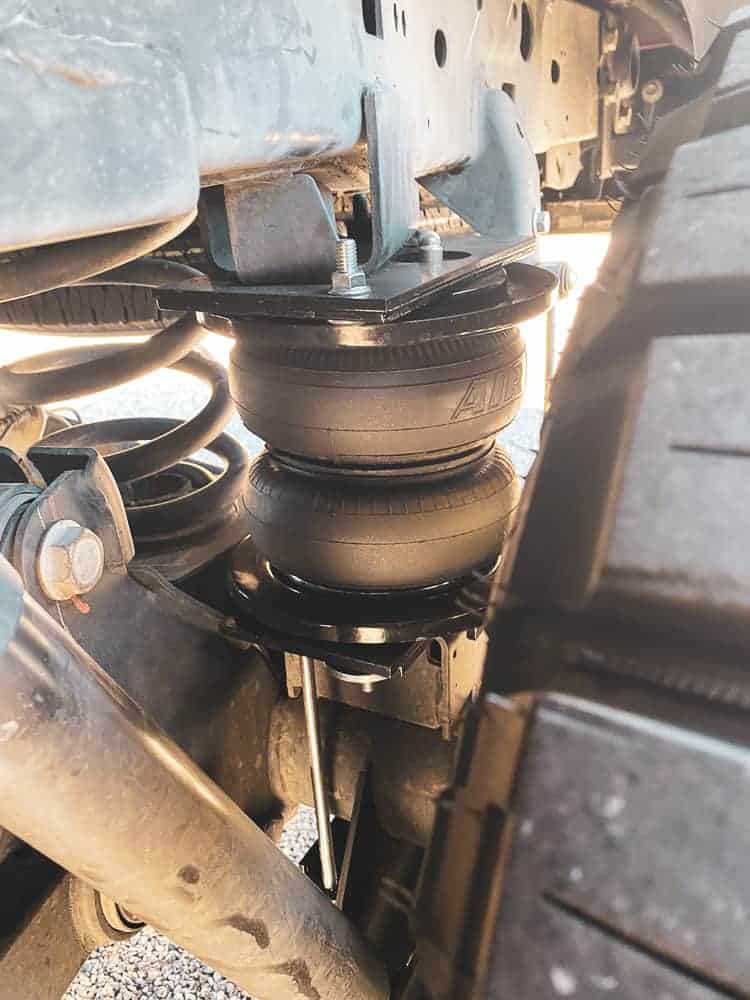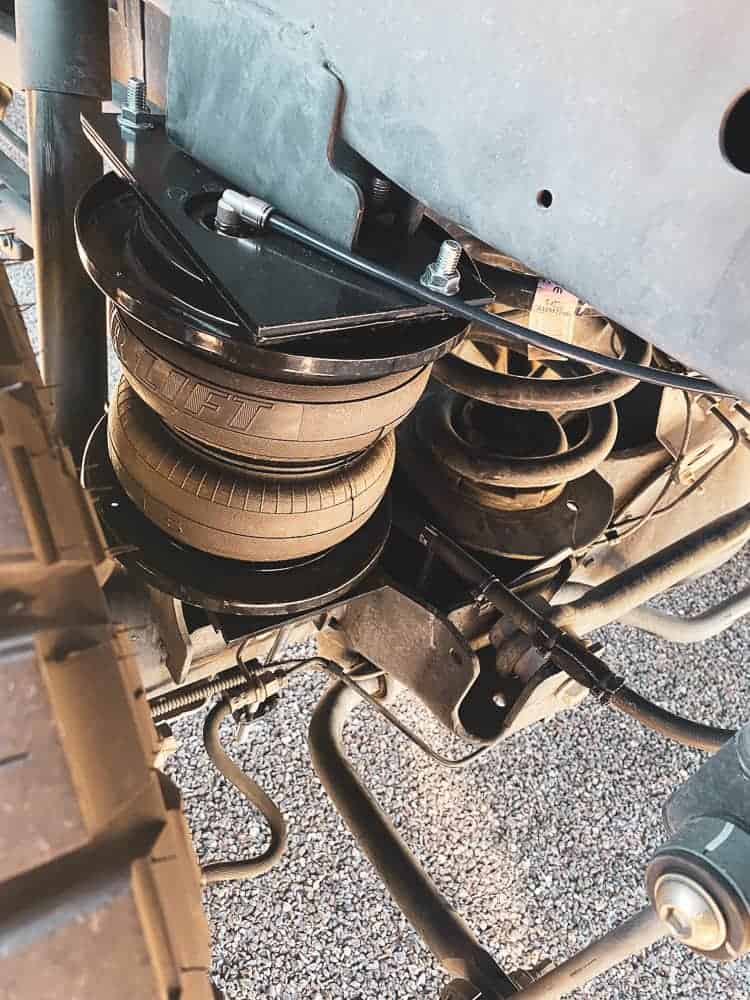When it comes to towing, having a level truck is crucial for safety and performance. However, not all trucks are created equal, and some may require additional support to maintain a level stance when hauling heavy loads. One of the best solutions for this problem is to add airbags to your truck’s suspension system.

Summary:
• Airbags are inflatable rubber bladders that fit between your truck’s leaf springs and frame.
• When you add air pressure to the airbags, they inflate and provide a cushion of air.
• Airbags can be adjusted to different pressures, which allows you to fine-tune the level of support they provide based on the weight of your load.
Airbags are a great way to level out your truck when towing heavy loads, and they offer a variety of benefits over other suspension enhancement options. We recently installed a set of Airlift bags on a 2020 Ram 2500 and have had great results towing a 30-foot trailer.
This article will discuss how airbags work, their advantages, and how to install them on your truck.
How Airbags Work
Airbags are inflatable rubber bladders that fit between your truck’s leaf springs and frame. They are designed to provide additional support and lift to your truck’s suspension when it is under heavy load. When you add air pressure to the airbags, they inflate and provide a cushion of air that helps to level out your truck’s stance.
Airbags can be adjusted to different pressures, which allows you to fine-tune the level of support they provide based on the weight of your load. This means that you can adjust the air pressure in your airbags to achieve a level stance, no matter what you’re hauling.

Why Add Airbags to Your Truck?
When you load up your truck with heavy cargo or hook up a trailer, the added weight can cause the rear of your truck to sag, throwing off the weight distribution and causing handling problems. Not only can this make for an uncomfortable ride, but it can also compromise your safety on the road.
Adding airbags to your truck’s suspension system allows you to level your truck, bringing it back to its original ride height and restoring proper weight distribution. This can significantly improve your truck’s stability and handling, making it safer and more comfortable to drive when towing heavy loads.
Types of Airbag Suspension Systems
There are two main airbag suspension systems: the standard airbag system and the adjustable airbag system.
Standard Airbag System: This system uses a set of airbags that are installed in place of the stock springs in your truck’s suspension system. The airbags are inflated with air to level out the truck and provide a smoother ride.
Adjustable Airbag System: This system is more advanced than the standard airbag system, offering more precise control over your truck’s suspension. With an adjustable airbag system, you can adjust the air pressure in the airbags, allowing you to fine-tune your truck’s suspension to suit different loads and driving conditions.

Advantages of Airbags
There are several advantages to adding airbags to your truck’s suspension system. Here are just a few:
- Improved Safety – When your truck is level, it provides better handling, braking, and stability. This can help to prevent accidents and make your towing experience safer.
- Increased Performance – A level truck also performs better when towing. It reduces strain on your suspension, improves fuel economy, and makes it easier to maneuver your load.
- Easy to Install – Airbags are relatively easy to install and require minimal modification to your truck’s suspension system.
- Cost-Effective – Compared to other suspension enhancement options, airbags are an affordable solution with significant benefits.
How to Install Airbags
While installing airbags is a relatively simple process, it does require some mechanical skill and knowledge of your truck’s suspension system. Here are the basic steps involved in installing airbags:
- Determine Your Truck’s Weight – Before installing airbags, you need to know how much weight you’ll be hauling. This will help you determine your airbags’ correct size and load capacity.
- Choose Your Airbags – Many different brands and types of airbags are available. Choose the ones best suited for your truck and the weight you’ll be hauling.
- Install the Airbags – Installation involves removing the existing bump stops on your truck’s suspension system and replacing them with airbags. You’ll also need to install an air compressor and air lines to inflate the airbags.
- Adjust Air Pressure – Once the airbags are installed, you must adjust the air pressure to achieve a level stance. This can be done using a manual or electronic control system.
Should I Install Airbags?
Airbags are an excellent solution if you’re looking for a way to level out your truck when towing heavy loads. They provide a variety of benefits over other suspension enhancement options, including improved safety, increased performance, and cost-effectiveness.
While installing airbags requires some mechanical skill and knowledge, it is a relatively simple process that can be done in a few hours. If you’re planning to haul heavy loads with your truck, consider adding airbags to your suspension system for a smoother, safer, and more efficient towing experience.



